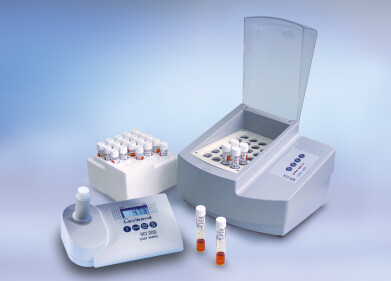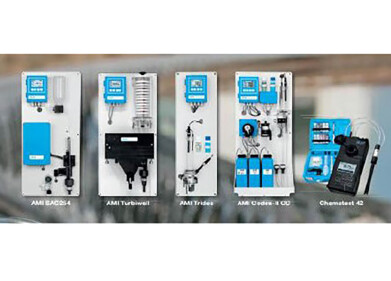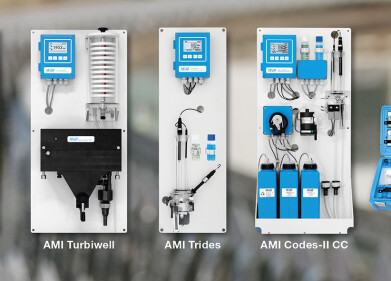Water Quality Monitoring
Tech Talk - What are the key differences between a Gauge (Vented) and an Absolute (Non-Vented) pressure water level sensors?
Aug 04 2021
Firstly, how does a pressure water level sensor work?
A pressure water level sensor operates by measuring the force exerted onto the units’ diaphragm and converts this to a reading for water level. The further under water the units are the deployed the higher the amount of pressure is exerted onto the units’ diaphragm. There are commonly two types of pressure sensors for the measurement of water level, these are Gauge, also called vented and absolute, which is also referred to as non-vented.
What is the difference between Gauge and Absolute Water level loggers?
A gauge water level sensor will not only measure the pressure exerted onto the sensor diaphragm, but it will also correct for changes in air pressure. This is important as it means that the unit can directly compensate for these air pressure changes, which directly have an affect on the water level if it is an open water body. To achieve this the unit has a cable which connects to the back of the sensor. The cable features a hollow tube inside that is vented to the atmosphere allowing for automatic compensation for changes in air pressure.
In comparison an absolute water level sensor will measure the pressure exerted onto the diaphragm but will not measure changes in barometric pressure as the unit is completely sealed. Because of this, users will also need to use a separate device to measure changes in barometric pressure; a LeveLine-BARO. Once water level data and barometric data is collected users can compensate the water level for the changes in barometric pressure within the LeveLink software.
Which one should I choose?
Your selection or water level sensor or water level data logger will really depend on your application and your requirements. If your deployment is going to utilise telemetry, then our advice would be to select a gauge or vented sensor. A telemetry system requires the use of a data cable to connect to the Leveline, a vented sensor requires the use of a vented cable. In addition, using a vented sensor means the data does not need to be compensated post collection. This makes data handling simpler.
However, gauge is not always best. As the units features a vented cable, the opposite end of the cable to the sensor will need to be kept dry, this is typically done using a desiccant cartridge, which stops water vapour entering the water level sensor trough the vent tube in the cable. These also need to be maintained, otherwise they can become saturated and allow moisture to enter the vent tube potentially blocking the vent. This would also need to be consider if the location is prone to flooding. In this instance the cable end with the desiccant should be installed at a height where water submergence can’t occur.
So, you may be thinking why would I use an absolute sensor? Well there are many advantages of an absolute / non vented solution. The first is that these water level sensors are completely sealed.
The advantage of this is they require less maintenance and can also be installed without needing a data cable. They can simply be hung on a steel wire or Kevlar chord. This can reduce cost, as the cables used to connect to the level sensors can be expensive. Another advantage is that you can use one barometric device to compensate more than one absolute sensor. This means you could have 10 or 20 devices located within a 10km radius all compensated by a single barometric device.
Absolute systems are also good for people who will be using the device for several applications, rather than having them permanently installed. In this instance a gauge type level sensor may become impractical as you may require varying cables lengths for different applications.
I have chosen between Gauge and Absolute, are there any other considerations?
There are a couple of further considerations to make. Firstly, how will I collect the data? Options include a water level sensor with an internal battery and datalogger, such as our Leveline, or a device which will connect to a telemetry system such as our Point Green, which can be combined with our Leveline Mini sensor.
The final consideration relates to the application itself. Will the conductivity / salinity vary at the location where I am monitoring? If you are measuring a marine or estuarine based application the answer will probably be yes, therefore our advice would be to have a device which can provide correction for density changes by measuring the conductivity and salinity. For this we would recommend a device such as our Leveline CTD, if a local datalogging model is required, or our Leveline Mini CTD with our Point Green telemetry system if you require remote access to the data from the unit. Both add a conductivity sensor to their measurement parameters to provide density correction.
If you require any further guidance or information please feel free to contact the Aquaread team
– info@aquaread.com / 01843 600030
Digital Edition
AET 28.4 Oct/Nov 2024
November 2024
Gas Detection - Go from lagging to leading: why investment in gas detection makes sense Air Monitoring - Swirl and vortex meters will aid green hydrogen production - Beyond the Stack: Emi...
View all digital editions
Events
Jan 12 2025 Abu Dhabi, UAE
Jan 14 2025 Abu Dhabi, UAE
Jan 20 2025 San Diego, CA, USA
Carrefour des Gestions Locales de L'eau
Jan 22 2025 Rennes, France
Safety, Health & Wellbeing LIVE
Jan 22 2025 Manchester, UK



















